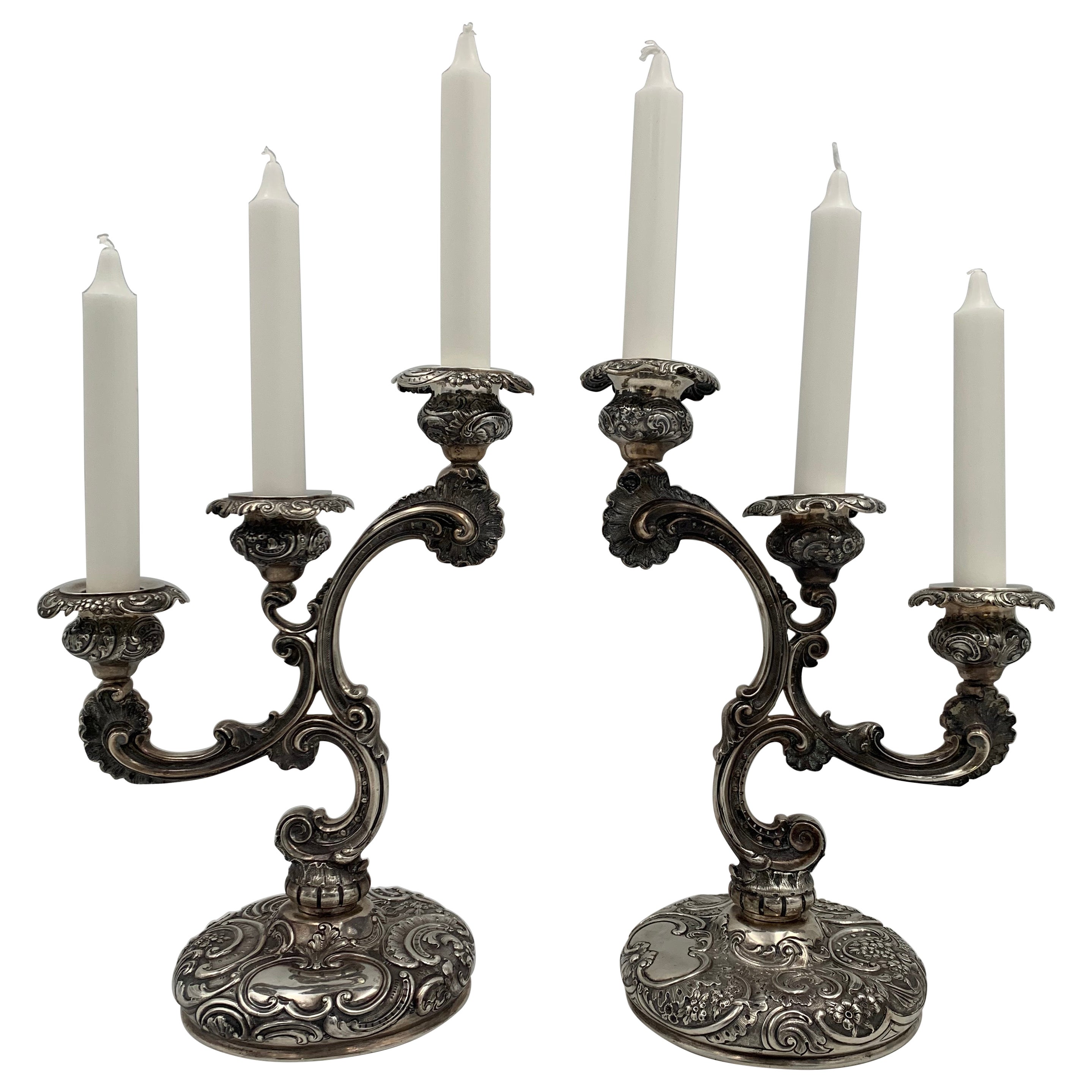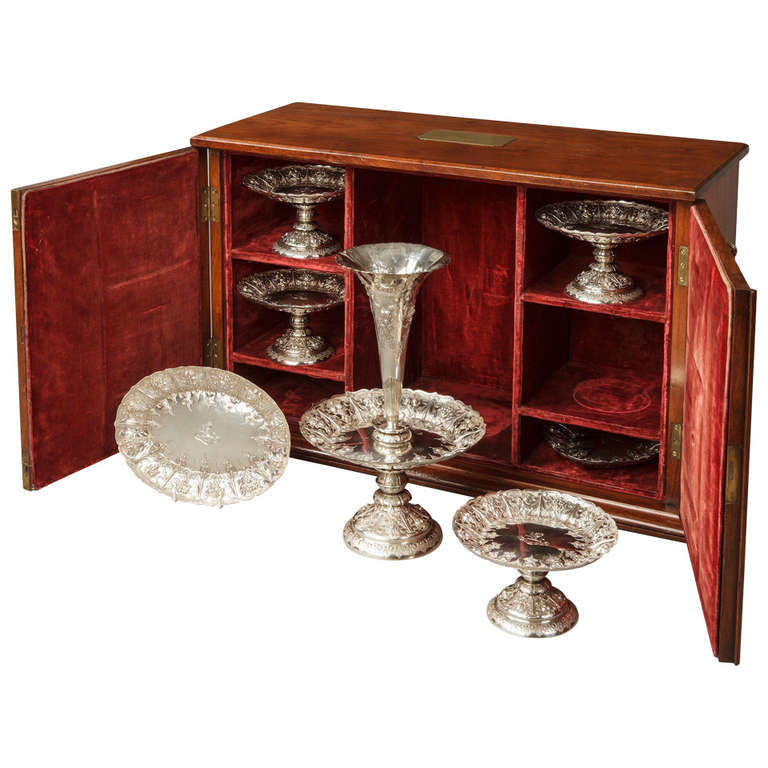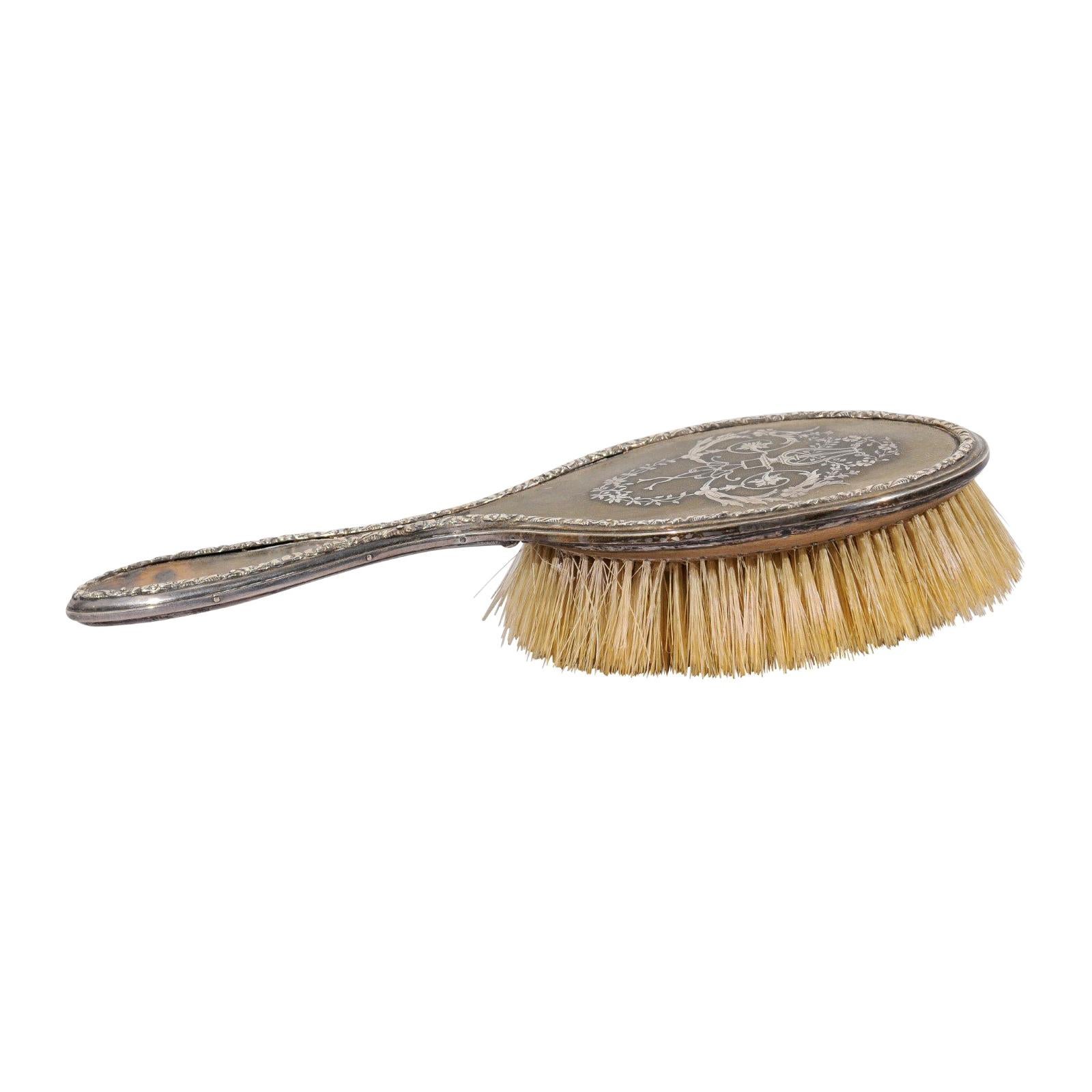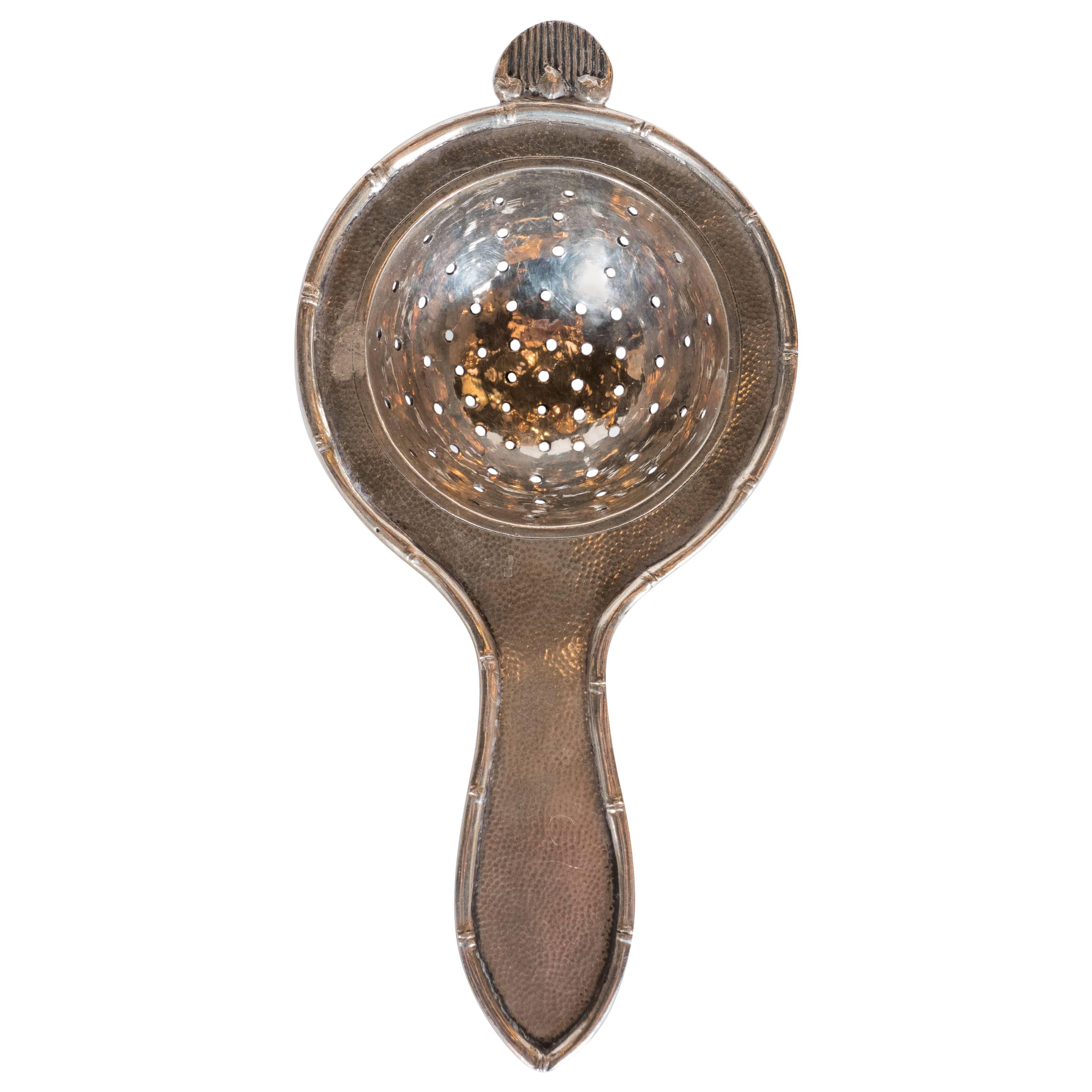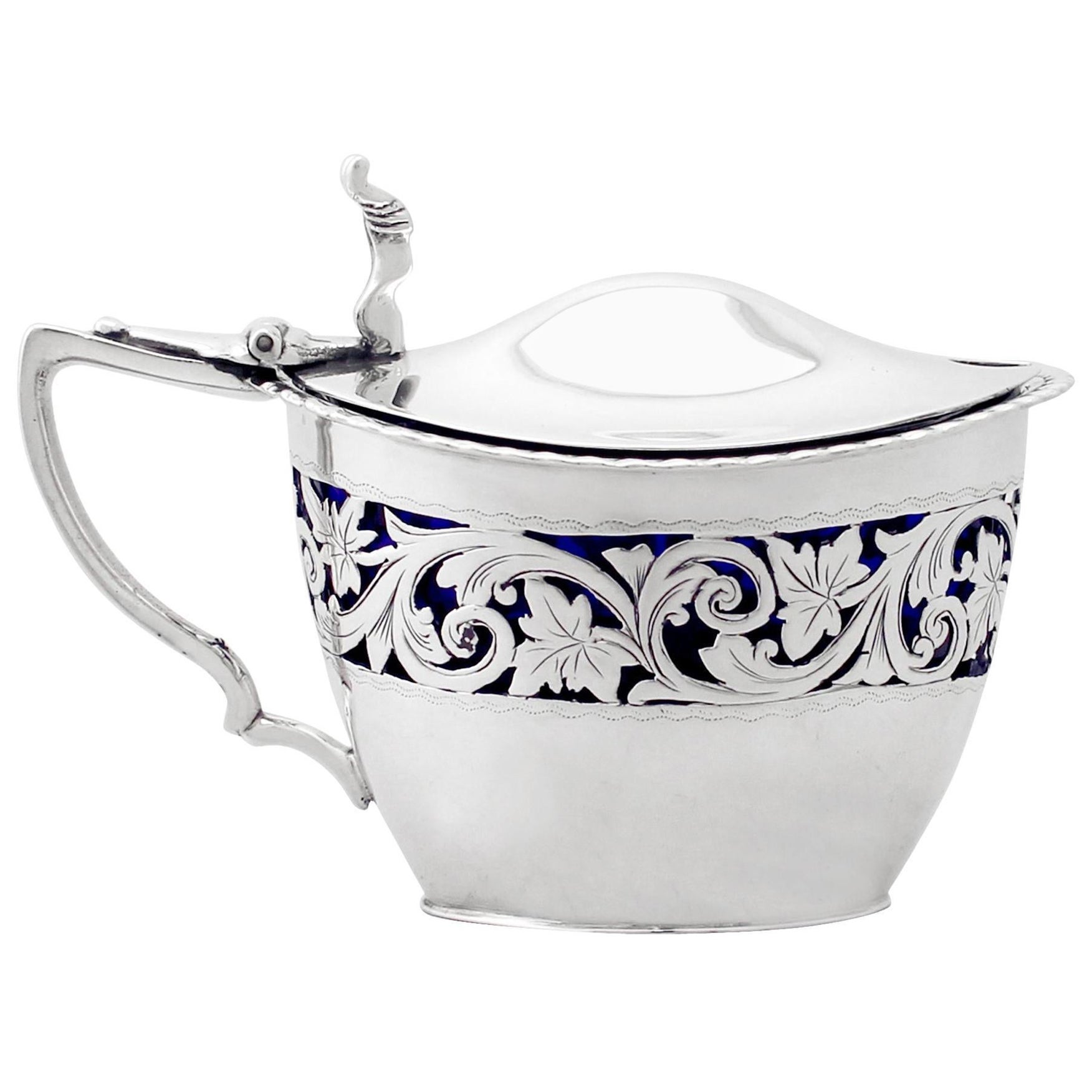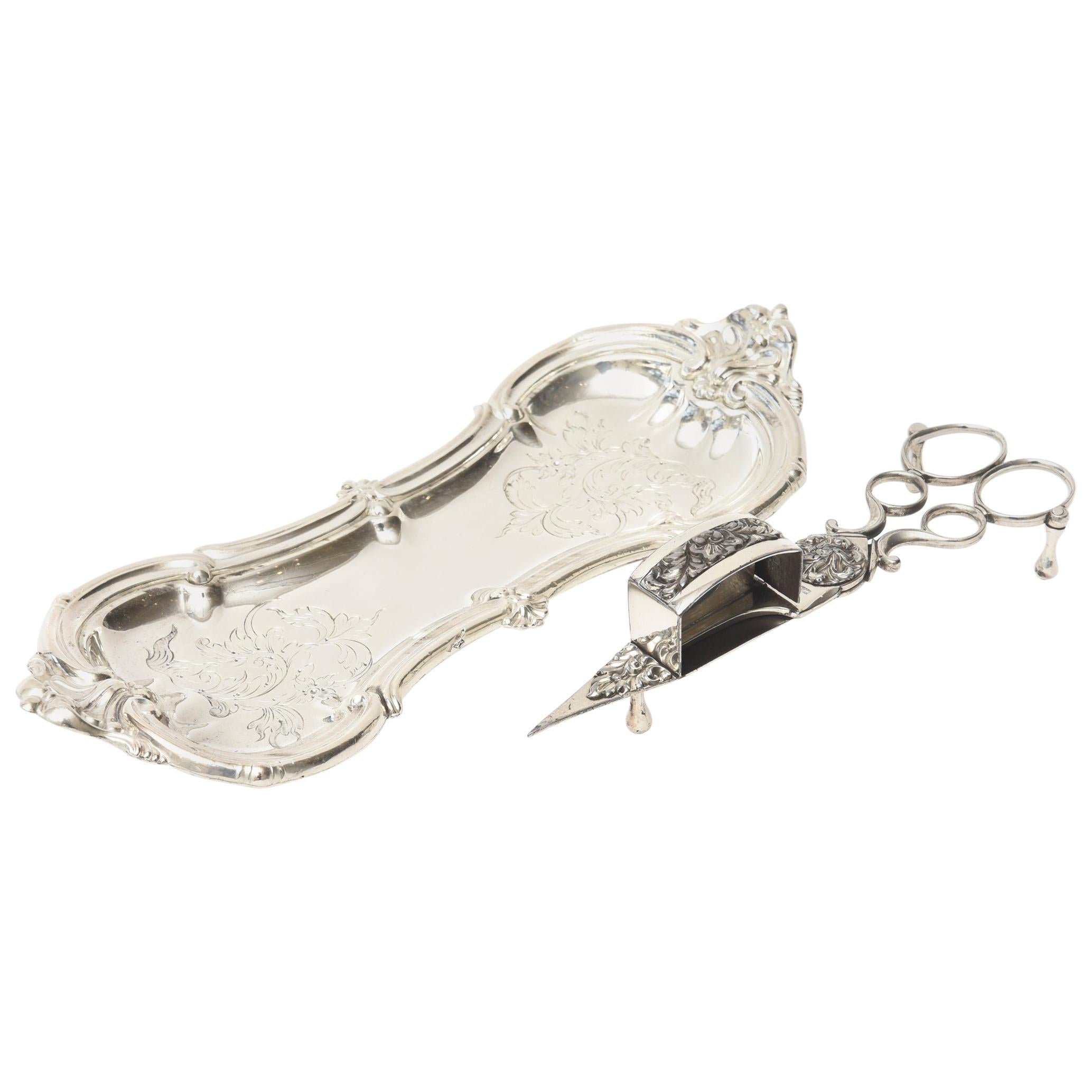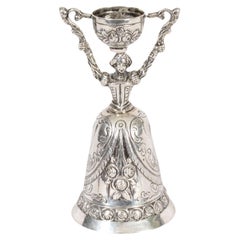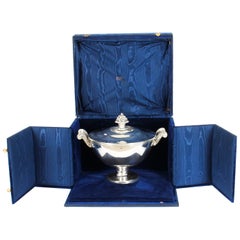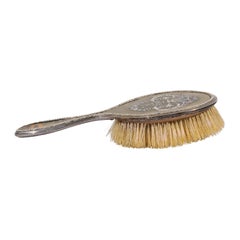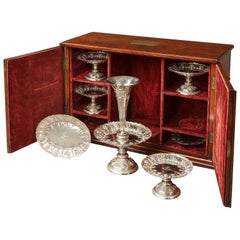
Antique English Coromandel and Silver Dressing Case by Leuchars, 19th Century
View Similar Items
Want more images or videos?
Request additional images or videos from the seller
1 of 17
Antique English Coromandel and Silver Dressing Case by Leuchars, 19th Century
About the Item
- Creator:Leuchars & Son (Maker)
- Dimensions:Height: 7.49 in (19 cm)Width: 13.39 in (34 cm)Depth: 9.45 in (24 cm)
- Style:Victorian (Of the Period)
- Materials and Techniques:
- Place of Origin:
- Period:
- Date of Manufacture:circa 1870
- Condition:
- Seller Location:London, GB
- Reference Number:Seller: 089761stDibs: LU950611038053
About the Seller
5.0
Platinum Seller
These expertly vetted sellers are 1stDibs' most experienced sellers and are rated highest by our customers.
Established in 1983
1stDibs seller since 2012
1,205 sales on 1stDibs
Associations
LAPADA - The Association of Arts & Antiques Dealers
More From This SellerView All
- Antique Dutch Silver Marriage Cup 19th CenturyLocated in London, GBThis is a charming antique .835 silver marriage cup, with Dutch hallmarks, circa 1880 in date. Condition: In excellent condition with no dings, dents...Category
Antique 1880s German Sterling Silver
MaterialsSterling Silver
- Antique Cut Crystal and Sterling Silver Hip Flask 1867 19th CLocated in London, GBA truly superb antique Victorian sterling silver and cut crystal glass hip flask - hallmarked London 1867 and the retailers mark for Jenner, of St. Ja...Category
Antique 1860s English Victorian Sterling Silver
MaterialsCrystal, Sterling Silver
- Antique Sterling Silver Tureen by Marc Jacquard Retailed by Bulgari 19th CenturyLocated in London, GBThis is a magnificent antique French sterling silver soup tureen and lid, retailed by Bulgari Rome with hallmarks for the maker Marc Jacquard and circa 1810 in date. This round Silver Serving Tureen has Rococo elements perfectly accenting the elegant body, with bold scroll handles decorated with foliate and floral ornamentation and stands on a pedestal foot with an encircled border. It features an exceptional cast floral and fruit bouquet finial on the lid. The tureen is beautiful in its simplicity and comes with its own vintage luxury case labelled Bulgari. Condition: In excellent condition with clear hallmarks and no dings, dents or signs of repair. Please see photos for confirmation. Dimensions in cm: Height 28 x width 37 x depth 29 Weight 76 troy oz Dimensions in inches: Height 11.0 x width 14.6 x depth 11.4 Weight 2.36 kg Bulgari The founder of the Bulgari brand is Sotirios Voulgaris who was born in March 1857 and came from the Epirus Village of Paramythia, the largest Aromanian center of silversmithing in the Balkans. He was one of eleven children of his father Georgios Voulgaris (1823–1889) and his Aromanian mother Eleni Stronggaris. In 1881, Sotirios Bulgari moved to Rome and, in 1884, opened his first store on via Sistina 85. In 1888, he married Aromanian Eleni Basio with whom he had six children: Constantine-Georgios (1889–1973), Leonidas-Georgios (1890–1966), Maria-Athena (1891–1976), Sofia (1893–1908), Alexandra (1895–1984) and Spyridon (1897–1932); Leonidas-Georgios is the father of the current chairman of the company, Paolo Bulgari.[9] In 1905, he unveiled the Via Condotti shop that would become the company's flagship.[10] In its early years, Bulgari was known for silver pieces that borrowed elements from Byzantine and Islamic art, combining them with floral motifs. At the time, Paris was the apex of fashion and creativity, and its trends influenced Sotirio's designs for decades: jewels of the early 20s were characterised by platinum Art Deco settings while those of the 30s featured geometric diamond motifs—sometimes set in combination with coloured gemstones. Convertible jewels...Category
Antique 1810s French Sterling Silver
MaterialsSterling Silver
- Antique Sterling Silver Call Desk Table Bell, George Unite 1886 19th CenturyBy George UniteLocated in London, GBA delightful antique English Victorian sterling silver call bell, bearing the makers mark of the renowned silversmith George Unite and hallmarks for Birmingham 1888 and Patent 801. ...Category
Antique 1880s English Victorian Sterling Silver
MaterialsSterling Silver
- Antique Rare Georgian Sterling Silver Teapot by Paul Storr 1817, 19th CenturyBy Paul StorrLocated in London, GBThis is an exceptional and very rare antique English George III sterling silver teapot by the world-famous silversmith, Paul Storr, and bearing hallmarks for 1817. This splendid teapot is of a delightful shape and it is profusely chased with half ribbed fluting decoration. It is further embellished with wonderful foliate motifs below and above the spout and stunning gadrooned shaped borders to the top of the teapot and the base. The remarkable quality flush hinged lid is also beautifully surmounted by a delightful round finial. It features an exceptional horn handle with striking details, proving the silversmith's exceptional mastery in the creation of unique and luxurious silverware - Paul Storr never tired of adding detail to create a true piece of artwork. The underside of the teapot bear full hallmarks: the Lion passant for sterling silver, the leopard head for London, the letter for 1817 and the maker's marks 'PS' for Paul Storr. There is no mistaking its unique quality and design, which is sure to make it a treasured piece by any discerning collector. Condition: In excellent condition with clear hallmarks and no dings, dents or signs of repair. Please see photos for confirmation. Dimensions in cm: height 12.5 x width 18 x depth 18 Weight 0.88 kg Dimensions in inches: height 5 inches x width 7 inches x depth 7 inches Weight 28.2 troy oz Paul Storr born in London England in 1771, was to become one of the most talented silversmiths of the nineteenth century. Today his legacy of exceptionally well crafted silver, found worldwide in museums and private collections, leaves one in awe when compared to that of his contemporaries.After having served a seven year apprenticeship from the age of 14, he began his career in 1792 when he went into a brief partnership with William Frisbee. This did not last and in 1793 a new mark, (his initials ‘P S’) was entered. By the beginning of the nineteenth century he had established himself as one of London’s top silversmiths producing, amongst others, commissions for Royalty. In 1801 he married Elizabeth Susanna Beyer with whom he was to have ten children. In 1807 Paul Storr entered into a working relationship with Philip Rundell and by 1811 was a partner, and managing the workshops for Rundell, Bridge & Rundell. During this period he kept his own marks and separate workshop. However it was through Rundell, Bridge & Rundell who were appointed Goldsmith in Ordinary to George III in 1804 that his reputation as a master silversmith grew. His talents lay in being able to transform ideas and designs from Rundell, Bridge & Rundell’s designers, William Theed...Category
Antique 1810s English George III Sterling Silver
MaterialsSterling Silver
- Antique George III Sterling Silver Salver by Paul Storr 1811 19th CenturyBy Paul StorrLocated in London, GBThis is a wonderful English antique George III sterling silver 10 inch salver, by the world famous silversmith Paul Storr. It has clear hallmarks for London 1811 and the makers mark of Paul Storr. It is typical of his work with the raised gadrooned rim with anthemion at intervals, on four fabulous foliate bracket feet. The salver is engraved with a crest and motto and the underside is later engraved Charlotte J. Parke from C. J. Parke, March 1893' The centre is engraved with a crest above a motto 'True and Fast' and I have researched this crest: The Crest of Parke The crest as engraved upon this George III English Sterling Silver Footed Salver by Paul Storr hallmarked London 1811 is that of the family of Parke. It may be blazoned as follows: Crest: A stag’s head couped sable holding in the mouth a key or Motto: True and fast The family of Parke originally hailed from the County of Cumberland in the northeast of England1 later settling in the County of Dorset at Henbury House, Sturminster Marshal, near Wimborne. Given the evidence of the inscription found on the underside of the salver ‘Charlotte J. Parke from C. J. Parke, March 1893’ it was undoubtedly at one time in the possession of Charles Joseph Parke (died 9th March 1893) of Henbury House aforesaid and gifted to Charlotte Josephine Parke (baptised 4th January 1857 died 2nd January 1941) his third daughter by his wife, Ellen Mary Ethelston. I would venture the following hypothesis that the salver was bequeathed to Charlotte in her father’s will that was granted probate at London on the 20th May 1893. The ‘March 1893’ of the inscription acts as a remembrance of the month of the death of her father. It was noted that Charlotte’s father left an estate worth some £66,892, 19 shillings and one pence, a very considerable sum in the last decade of the 19th Century and even thereafter. Charlotte never married and was living at the time of her death at The Coppice, Sixpenny Handley in the County of Dorset. Her will was proved for probate at Llandudno on the 25th March 1941. She left an estate worth £18,866, 10 shillings and 4 pence. Again, a comfortable sum in 1941. See the photo of Henbury House, Sturminster Marshal, near Wimborne, Co. Dorset. The former seat of the Parke family. The house was destroyed by fire, the remains of which were demolished in the 1990's. There is no mistaking its unique quality and design, which is sure to make it a treasured piece by any discerning collector. Condition: In excellent condition with clear hallmarks and no dings, dents or signs of repair. Please see photos for confirmation. Dimensions in cm: Height 2 x Width 26.5 x Depth 26.5 Weight 0.69 kg Dimensions in inches: Height 1 inch x Width 10 inches x Depth 10 inches Weight 1.5 lbs Paul Storr born in London England in 1771, was to become one of the most talented silversmiths of the nineteenth century. Today his legacy of exceptionally well crafted silver, found worldwide in museums and private collections, leaves one in awe when compared to that of his contemporaries.After having served a seven year apprenticeship from the age of 14, he began his career in 1792 when he went into a brief partnership with William Frisbee. This did not last and in 1793 a new mark, (his initials ‘P S’) was entered. By the beginning of the nineteenth century he had established himself as one of London’s top silversmiths producing, amongst others, commissions for Royalty. In 1801 he married Elizabeth Susanna Beyer with whom he was to have ten children. In 1807 Paul Storr entered into a working relationship with Philip Rundell and by 1811 was a partner, and managing the workshops for Rundell, Bridge & Rundell. During this period he kept his own marks and separate workshop. However it was through Rundell, Bridge & Rundell who were appointed Goldsmith in Ordinary to George III in 1804 that his reputation as a master silversmith grew. His talents lay in being able to transform ideas and designs from Rundell, Bridge & Rundell’s designers, William Theed...Category
Antique 1810s English George III Sterling Silver
MaterialsSterling Silver
You May Also Like
- Leuchars English 1889 Pair of 3-Light Sterling Silver Candelabra in Rococo StyleBy Leuchars & SonLocated in New York, NYPair of finely chased, 3-light English sterling silver candelabra by William Leuchars from 1889 with removable bobeches in ornate Rococo style with floral motifs and stylized, curvil...Category
Antique 1880s English Sterling Silver
MaterialsSilver, Sterling Silver
- English 19th Century Silver Dressing Table Brush with Lyre and Floral ArabesquesLocated in Atlanta, GAAn English silver dressing table brush from the 19th century with silver piqué décor of lyre and floral arabesques. Born in England during the 19th century, this exquisite dressing t...Category
Antique 19th Century English Sterling Silver
MaterialsSilver
- 19th Century English Sheffield Hall Marked Silver Table Service with CaseBy Frederick ElkingtonLocated in London, GBA fine Sheffield hall marked silver cased table service by Frederick Elkington The seven piece suite comprising;- a tiered epergne, four footed sweet...Category
Antique 19th Century English Victorian Platters and Serveware
MaterialsSilver
- Antique English Sterling Silver Cruet Set, 19th CenturyLocated in Gardena, CAAntique English sterling silver cruet set, 19th Century. Cut glass diamonds to the glasses. John Eldershaw Brunt and Henry Manton sterling silver...Category
Antique 19th Century Sterling Silver
MaterialsSilver
- English 19th Century Sterling Silver Perforated Tea StrainerLocated in New York, NYThis beautiful and refined tea strainer was realized in England- arguably the birthplace of fine silverware- during the 19th century. It features a con...Category
Antique 19th Century English Victorian Sterling Silver
MaterialsSterling Silver
- 19th Century Victorian English Sterling Silver Mustard Pot, 1896By Stokes & Ireland LtdLocated in Jesmond, Newcastle Upon TyneA fine and impressive antique Victorian English sterling silver mustard pot; an addition to our silver cruets/condiments collection. This exceptional antique Victorian sterling silver mustard pot has an oval tapering form. The body of the mustard pot is embellished with a broad shaped band of pierced scrolling leaf ornamentation flanked with undulating wigglework decorated borders. The flared upper rim of this silver mustard pot is encompassed with an applied gadroon decorated border. This Victorian mustard pot retains the original hallmarked hinged, plain domed cover surmounted a shaped bifurcating thumbpiece. This fine example of antique silverware is fitted with a shaped handle featuring an incurved, shaped thumbpiece. The mustard pot is fitted with the original removable blue glass liner. This impressive sterling mustard pot...Category
Antique 1890s English Victorian Sterling Silver
MaterialsSilver, Sterling Silver
Recently Viewed
View AllMore Ways To Browse
Victorian Dressing Case
Victorian Antique Jar
Gilt Coromandel
Antique Silver Topped Jars
Silver English Antique Mirrors
Glass Bottle Sterling Top
Antique Sewing Cases
Antique Sewing Case
Antique Brass Mirror Tray
Brass And Glass Jewelry Case
Brass And Glass Self
Dressing Table Blue
19 Century Kitchen Items
Antique Mirror With Blue Glass
Antique Glass Canning Jars
Dressing Sterling
Antique Cut Glass Trays
Velvet Dressing Table
